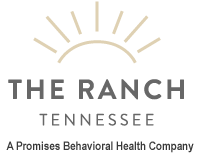A not-so-new therapy is making headlines again as treatment for Bipolar Disorder and Depression. Electroconvulsive Therapy (ECT), otherwise known as shock treatment, has actually been around since the 1930s. As new prescription drugs became available, though, ECT disappeared for awhile. ECT is the process of administering a small electrical shock to the patient’s brain. This electrical shock then induces a seizure that causes an interruption in normal brain activity. The seizure causes the brain to release chemicals, making its cells function better, which improves mood. Treatment is typically provided by a trained psychiatrist and can be applied during a non-invasive inpatient or outpatient setting. ECT treatments can be applied up to three times a week and normally therapy is completed in twelve treatments or less. Since ECT is essentially electrical pulses delivered directly to the brain via electrodes placed on the patient’s head, it provides the quickest relief for those who are manic or suffering from severe depression. Studies point to its effectiveness as about 80 percent of those using ECT treatment experience relief – relief that some couldn’t achieve otherwise. It is also popular because results are immediate. In the past, ECT had developed a bit of a bad reputation. It was portrayed in movies as a means of punishment, and indeed, was used as such in some mental health facilities years ago. It was also extremely misused by doctors to chastise poor behavior or subdue disorderly patients. Because it was administered without assisting drugs, some patients were injured as a result of treatment. As such, its use still draws scrutiny. However, the ECT treatments of today are actually very different from that of yesteryears. Under current treatment, patients are given anesthesia and muscle relaxants before ECT treatments are provided. This helps prevent convulsions and potential injury. In fact, many patients only experience minor movement of the extremities. As with any treatment there are side effects. Patients with certain heart problems are at higher risk for side effects and will want to consult their doctor before undergoing treatment. Common side effects include nausea, headache, muscle discomfort and short-term memory loss. Most patients don’t remember the treatment and may experience memory loss for a limited period of a week or two. Some do experience longer-lasting memory problems, but studies seem to indicate that ECT does not cause damage to brain cells. Regardless, ECT has proved especially helpful to certain groups of people. Those who are pregnant may be excluded from taking medications. Those suffering from extreme suicidal depression or uncontrollable mania may have no other choice. It has also been beneficial for those who have already pursued medications without achieving results or for those who are extremely ill, needing immediate relief. For these groups, ECT is a glimmering ray of hope.
Call for Immediate Help:1.844.876.7680



